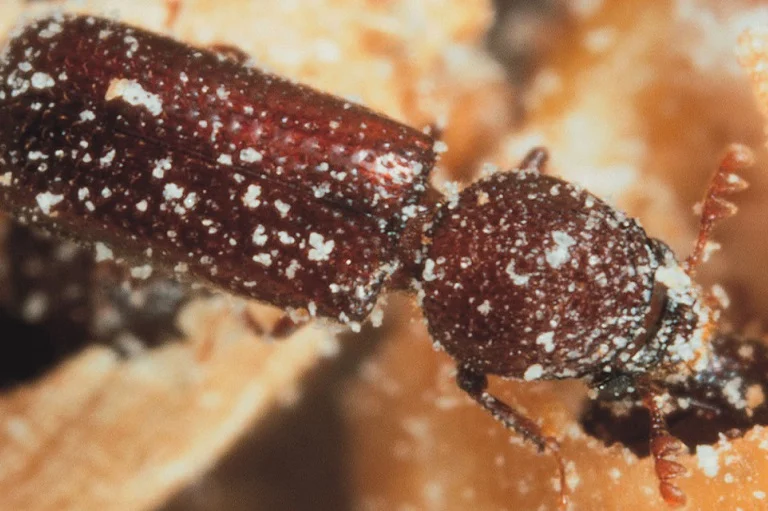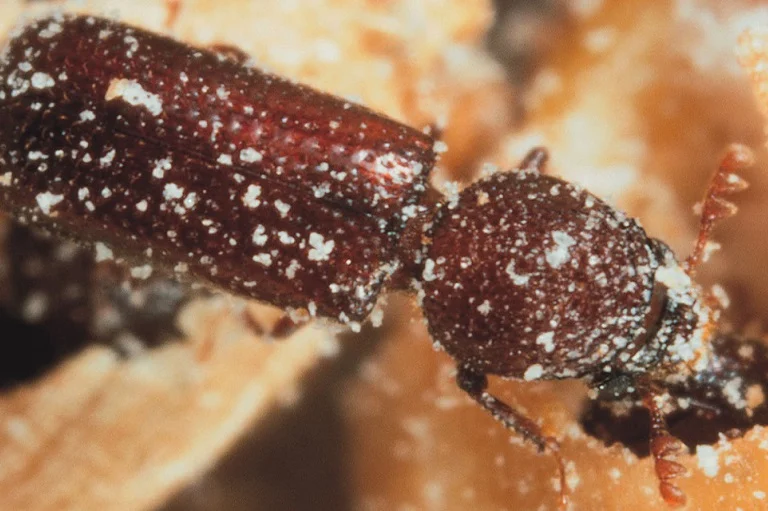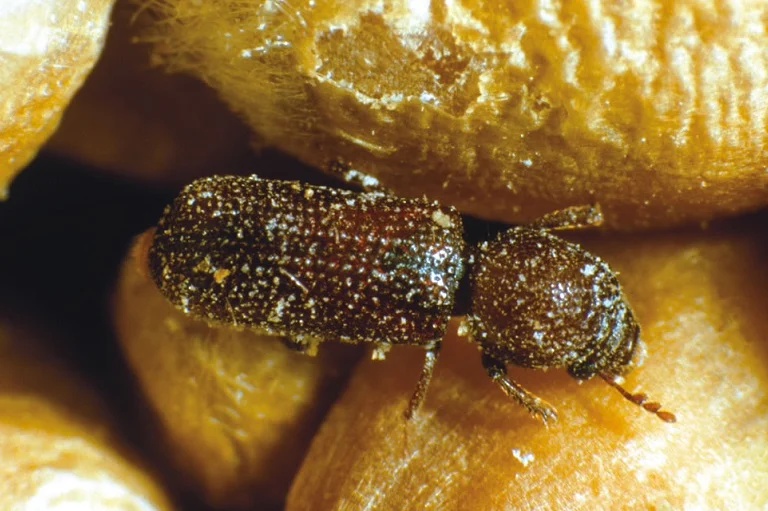
Lesser Grain Borer
Rhyzopertha dominica

Rhyzopertha dominica
Identification
The adults are 2.3-3.0 mm in length and are dark red brown/black in colour. They have a cylindrical body and elytra (hardened wing cases) with well defined rows of punctures. The antennae have usually less than 11 segments with a loose 3 segmented antennal club. The prothorax more or less covers the downward-turned head which is not readily visible from above.
Symptoms
Lesser grain borers are primary pests of grain and will therefore attack undamaged grain rendering it susceptible to attack by secondary pests. Both the adults and larvae feed on the grain creating floury dust and potentially leaving little but empty husks. The adults are active and may infest a large number of kernels whilst the larvae bore into the kernels and develop within the grain. Infestations in wheat can lead to reduced flour yields and will affect the quality of dough. Both volume and loaf characteristics can be adversely affected. Commodities may be tainted by insect excreta and secretions. Heavily infested wheat is reputed to have a honey-like odour.
Life-cycle
The female lesser grain borer lays between 300-500 eggs over a period of approximately three weeks. They are laid singly or in clusters from 2-30 and are often attached to the grain. Depending upon temperature the eggs hatch in 7-18 days to give white larvae with brown heads and relatively small legs. These bore into the grains where they feed and develop into fleshy forms with a typical ‘C’ shape. There are up to five moults leading to pupation in the grain. The pupal stage lasts about one week. The total life-cycle lasts from 24-133 days depending upon temperature. At 26 °C and 70 % RH (14 % MC in commodities) the life-cycle lasts 45 days. Adults can live for 10 months.
Importance
The lesser grain borer originated in South America but is now a cosmopolitan pest especially in warm countries and thrives in temperatures above 23 °C. It is associated with a wide variety of vegetable materials including wheat, barley, maize, rice, millet, sorghum, dried potatoes, dried herbs and biscuits. Infestations have also been recorded in wood and books. In Australia and India it is a serious pest of grains. Infestations are encountered in grain stores including ships holds, flour mills and animal feed mills.
Management of storage pests
Use trapping methods to identify and measure insect infestations
Clean stores thoroughly before harvest and seal all building cracks and crevices
Store grain at <15 % MC and <15 °C
Where appropriate apply insecticides to the fabric of stores or apply grain protectants

Lesser grain borer adult

Lesser grain borer adult and damage

Lesser grain borer adult


